Closed but still caring: What are the flamingos up to?
I hope all of you flamingo followers are keeping safe and well in these difficult times, and I'm sure that you, like me, are missing being able to have contact with the birds on your visits to WWT Slimbridge. Especially at this time of year when they start to become more interesting than normal! It's the time when the bird's thoughts turn to nesting.
Given the unusual circumstances, I thought I would provide some peeks into the life the flamingos, whilst the centre is closed that can give you an idea of what's going on and what they're up to. I'd like to start by giving a big shout out to my amazing bird expert colleague, Phoebe, who has been providing a whole stream of flamingo-related footage.
During this quieter period, when they birds are only seeing those who provide them with their daily care, they can be found in areas of their enclosure that they don't always reside in. Like the Chilean flamingos crowding around the picnic table and stepping stones, for example! Phoebe caught a very flirty group of flamingos standing in the spot usually reserved for visitors!
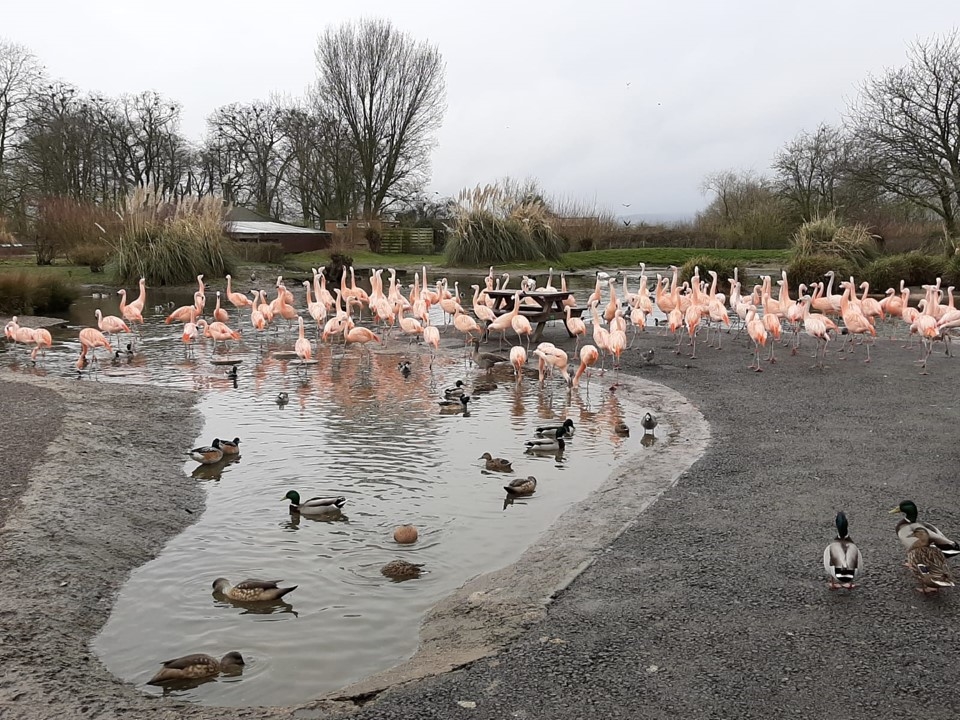
Phoebe and the other Living Collections wardens have a keen eye for the birds, and they can use the time when animals are feeding to take a closer look at the condition of all birds in a group. This is all the more easier when the flamingos are as tame and trusting as the lesser flamingos are- Phoebe is able to get right in with the flock having its breakfast to really see who is who and what is what. It's the sign of a good animal keeper- to be able to move calmly and confidently around your animals and then be accepting of your presence.
These daily cleaning and feeding routines can reveal a great deal about the birds, both as individuals and as a group. The Chilean flamingos are quite partial to a bit of marching when you're inside cleaning. And Phoebe was lucky enough to have the whole flock dancing "just for her" whilst hosing down their rubber matting and food bowl. Watching this type of behaviour is extra important at this time of year. By looking at the courtship display and seeing who is getting really flirty, Phoebe and co. can try to predict (as much as possible because the one thing that flamingos are really good at is being unpredictable!) when the birds are most likely to began nest building and egg laying.
An interested and flirtatious audience for Phoebe's hosing skills. Keen to impress or keen to check she's not missed a bit...?!
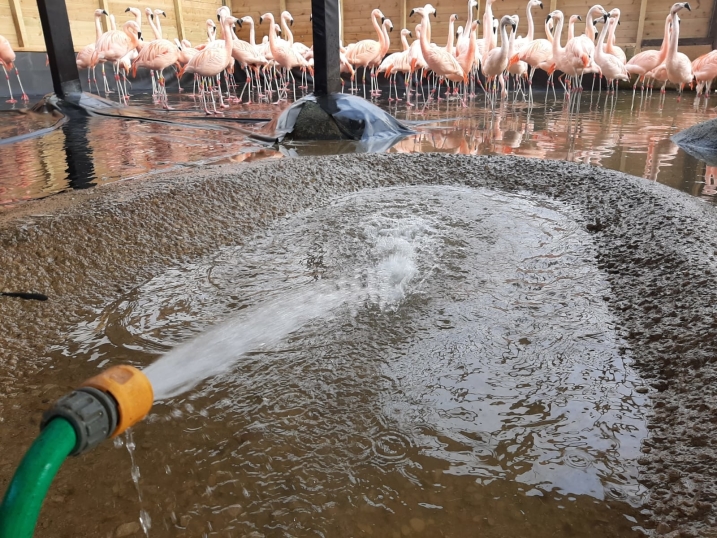
Flamingos will be spending a lot of time foraging and preening during the spring. They have to keep up a good intake of carotenoid (pink) pigments from their diet to ensure that new feathers, for their breeding plumage, are as colourful as possible. And therefore they spend a great deal of their time preening and cleaning these new, colourful feathers so that they are attractive as possible to the other birds in the flock. Changes to the birds' behaviour will be noticed by Phoebe and the other wardens, which can tell them what stage in their annual cycle (moulting, growing new feathers, getting ready to nest etc) the flamingos are currently at. And they can use this information to provide the flamingos with exactly what they need; maybe sand for nests or more food to put on condition for nesting.
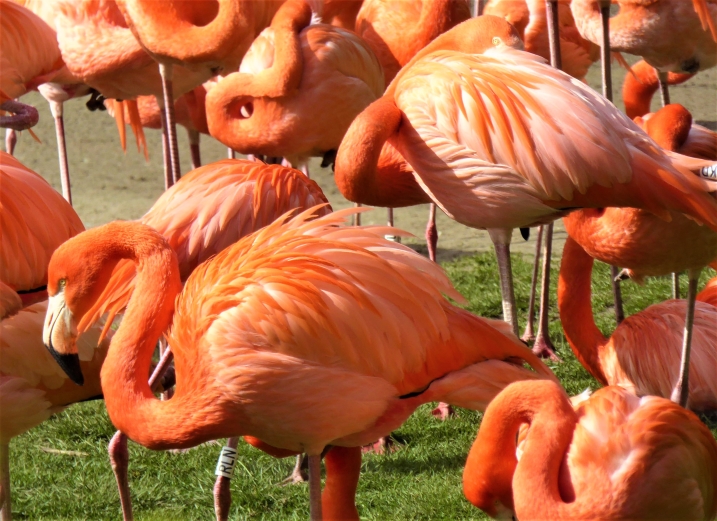
Looking at the whole flock within its enclosure is helpful to see how settled and relaxed the flamingos are. This will be particularly important at the moment, with WWT Slimbridge and the other WWT sites closed. The birds react to visitors. And visitors can provide stimulation and interest to the birds, as well as the birds being interesting to the visitors. The sudden quiet maybe be an unusual situation that the flamingos are not used to. The routine of having people going around and past them between certain hours of the day can be a useful predictor of time and when things are likely to happen. Watching out for, and keeping an eye on, the birds helps the Living Collections wardens make sure the flamingos are doing OK when their normal routine is out of sorts.
For example, Phoebe shared this photo of the Caribbean flamingos doing their courtship dancing. You can see lots of birds with their necks in the air, heads held high. This flock lives opposite the busy WWT Slimbridge restaurant. They see many, many visitors going to backwards and forwards. So when there are no visitors, checking on the birds' response is important. It seem in this case, they are carrying on as normal!
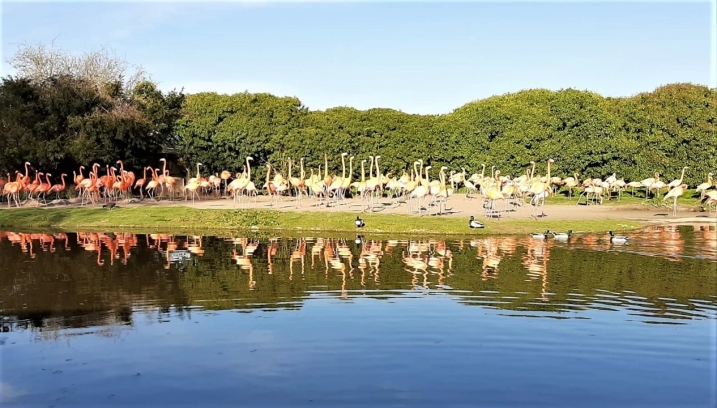
So even though you may not be able to come and see the birds yourself at the moment, they are still being given the same good care as if things were running normally. Hopefully this will give you some insider knowledge of flamingo care at WWT that is always as good as watching the birds for yourself... I will leave you with a couple of close-up photos that Phoebe took of the lesser flamingos, showing just how close the WWT bird staff can get to their beautiful pink charges.
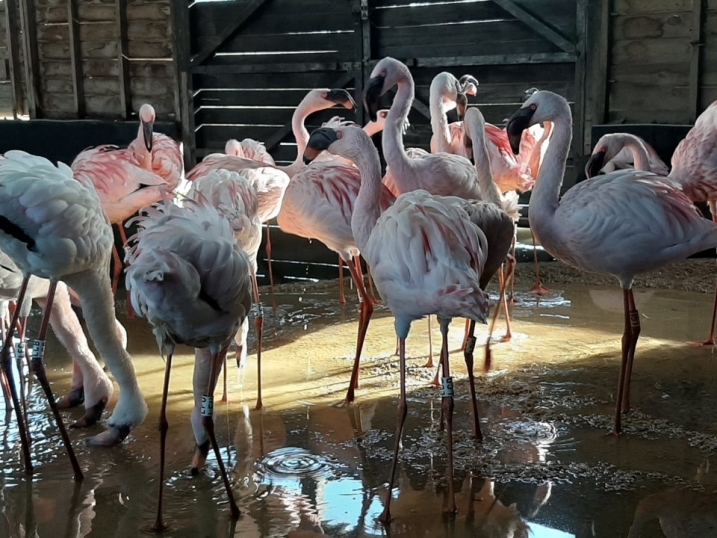
In the photo above you can see the flock's social structure around feeding time. Some birds will be pushy and aggressive- barging their way in to the middle of the feeding pool. Other birds will be quieter, feeding around the edge and trying to not get in anyone's way. Changes in a bird's personality or demeanour are useful signs that he or she might need closer attention.
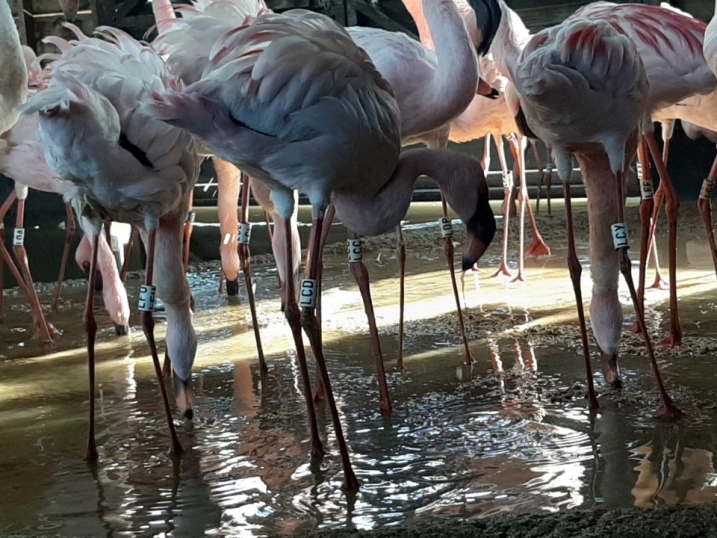
When you get this close, you can see that the flamingo is not all one colour and not all one shade of pink. Lesser flamingos, for example, have darker pink necks and heads and lighter bodies. They should have long, red dropping plumes over their wings (at the right time of the year), and bright red legs and bill. The subtle changes in colour between each bird are, again, useful clues to how that individual is doing or feeling, and tell the wardens if all is well in the group.



